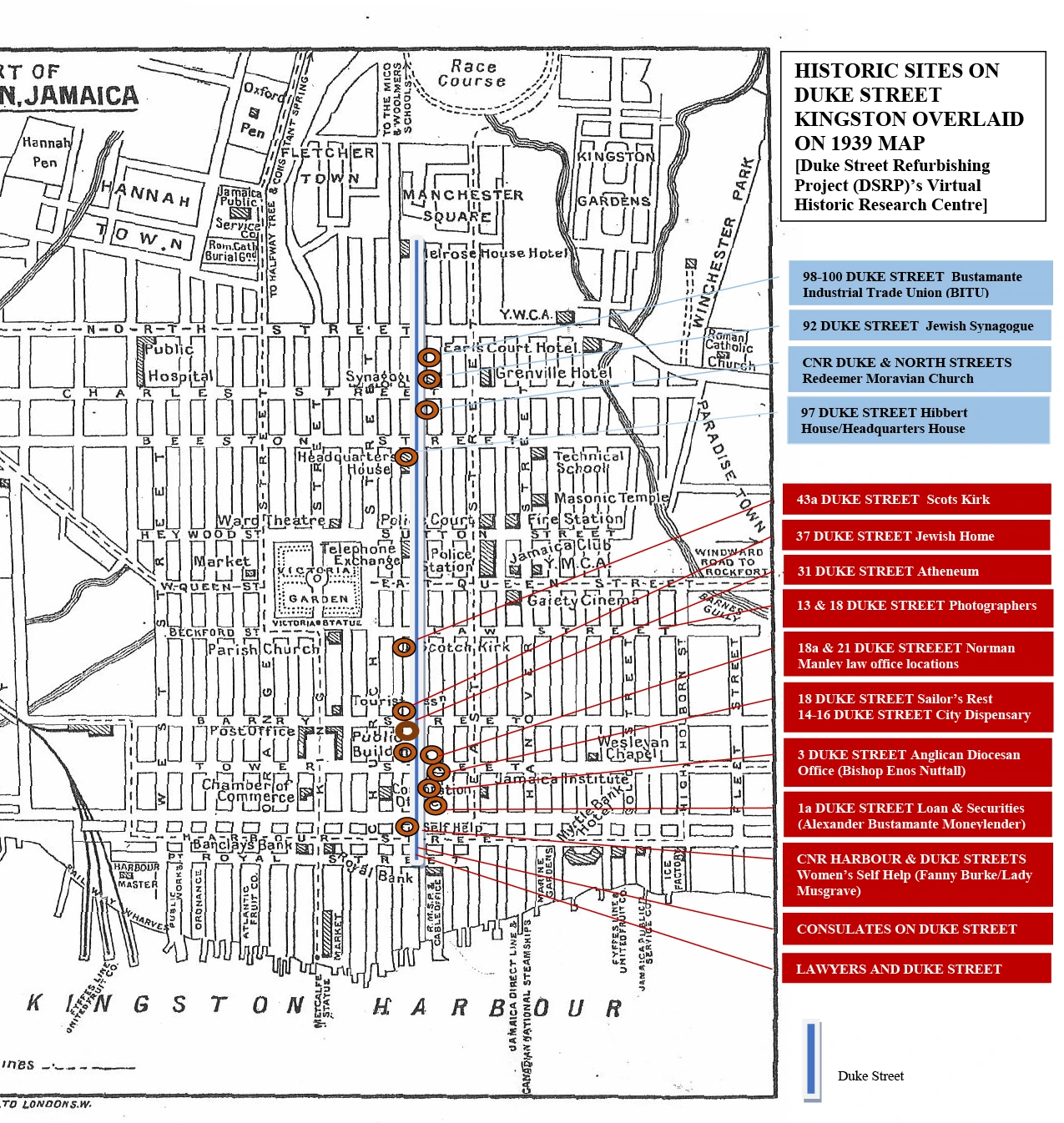consulates of dukes street
consulates on dukes street
Throughout the early decades of the 20th century, representatives of several nations operated from various premises on Duke Street. These included the Consulates of the United States of America, Nationalist China, and the Republic of Cuba.
The American Consulate General was located on the first floor at 6 Duke Street, the Victoria Mutual Building Society headquarters, from the early 1900s. A Gleaner article from September 1952, on the VMBS building, shows the US flag flying over the building. In the 1940s, during World War II, refugees staying at Gibraltar Camp as well as Italians previously interned in the Male Internment Camp adjacent to Up Park Camp military headquarters, flooded the consulate with applications for visas to the United States. The Consulate moved in 1960 to 43 Duke Street where it remained until Jamaica gained independence.

Gleaner September 17, 1952
A Chinese Consulate was opened in Jamaica in 1943, operating from rented quarters at East Parade. There were already several groups of Chinese workers in Jamaica on work contracts from the 1850s and 1860s, and a group of 608 Chinese indentured labourers were brought to Jamaica in 1884 to work in the sugar industry though many moved on to trading and shopkeeping. The Consulate was to serve this varied community. In 1946, the local Chinese community raised funds to purchase a building at 26 Duke Street as a permanent location for the consulate. Central to that effort was the Chinese Benevolent Society, the oldest Chinese organization in Jamaica, started by Chin Tung-Kao, one of the early indentured workers.
The late 1940s were a period of war in China between the Nationalist Government of Chiang Kai-Chek and the Communist Party led by Chou En-Lai, which eventually prevailed and was recognized by the British in January 1950. This led to the closure of the consulate and the departure of the Nationalist Chinese representatives. Representations on behalf of the local Chinese community were taken up by the Chinese Benevolent Society. Formal diplomatic relations between the People’s Republic of China and Jamaica were established in November 1972 and a Chinese Embassy was opened here in 1973
Cuban Consulate
Jamaica’s ties with Cuba go back to 1869 when Cuban liberator Carlos Manuel Cespedes declared war against the Spanish Government and was elected President of the Republic in Arms. He immediately took steps towards getting help from friendly nations by appointing representatives in Jamaica, France, Colombia, Peru and Chile. On May 9, 1869 a delegate met with the Cuban immigration office in Jamaica to form a revolutionary committee responsible for collecting money to help the rebels. Cuban revolutionary Antonio Maceo spent time in Jamaica between 1879 and 1881, during which time his political plans matured. He returned here in 1883 and formed the “Cuban Independence Party”. Another Cuban revolutionary, Jose Marti, also visited Jamaica and met with Cuban exiles planning the revolutionary war. Between 1912 and 1931 workers from Haiti, Jamaica and other Caribbean islands went to Cuba to work in the expanding sugar sector, mainly in the eastern provinces of Camaguey and Oriente. Jamaica’s support for Fidel Castro’s revolution and his friendship with Michael Manley is well documented. Cuba showed its appreciation to Jamaica for support in its revolutionary wars by building three educational institutions in Jamaica: The Jose Marti and Garvey Maceo High Schools and the G.C. Foster College of Physical Education & Sport. For several years, the Cuban Consulate was located here at 10 Duke Street.
